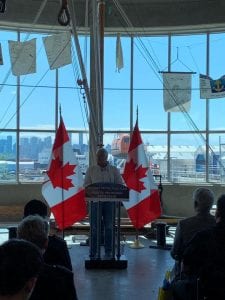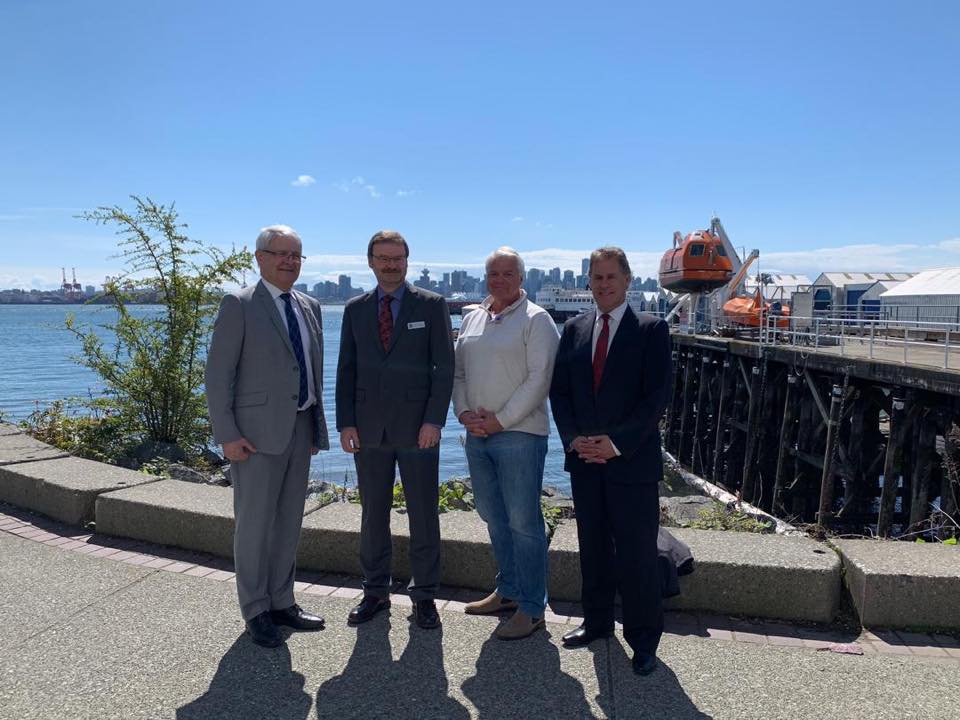Indigenous coastal communities share ties to Canada’s oceans that span generations. They value them as a source of livelihood, food security, and transportation routes. The Oceans Protection Plan is providing Indigenous peoples with new opportunities to protect and preserve Canada’s oceans and sea routes.

Today, the Honourable Marc Garneau, Minister of Transport announced that the Government of Canada is providing funding over three years to the British Columbia Institute of Technology (BCIT) to deliver a program to increase access to marine training courses for Indigenous communities.
This $6.2 million in funding under the Oceans Protection Plan to BCIT will deliver a joint project with Camosun College to engage and consult with Indigenous communities to establish the full scope of training to be delivered and provide options to deliver training in Indigenous communities. BCIT and Camosun will also work with a number of industry partners, marine employers, and Canadian Coast Guard Auxiliary to offer opportunities to work and gain experience at sea.
The Marine Training Program is part of the $1.5 billion Oceans Protection Plan, the largest investment ever made to protect Canada’s coasts and waterways, and reduces barriers to marine training for underrepresented groups in the marine labour force, such as women, Northerners, Inuit and Indigenous peoples.
The Oceans Protection Plan is creating a world-leading marine safety system that provides economic opportunities for Canadians today, while protecting our coasts and waterways for generations to come. Work is being done in close collaboration with Inuit and Indigenous peoples, local stakeholders and coastal communities.
Quotes
“Our Government is committed to maintaining a well-trained marine labour force reflective of Canada’s diverse population. Thanks to initiatives like the Oceans Protection Plan’s Marine Training Program, Canada’s marine safety system is stronger than it has ever been.” – The Honourable Marc Garneau, Canada’s Minister of Transport
“BCIT is committed to providing flexible pathways to learning, to facilitating reskilling, and to improving learner access—particularly for underrepresented groups, said President Kathy Kinloch. “This announcement will enable us to continue the important work of supporting Indigenous communities and students through delivery of skills training and providing opportunities to gain hands-on experience in the marine industry.” – Kathy Kinloch, President, British Columbia Institute of Technology
Quick Facts
- Since the Oceans Protection Plan started in November 2016, over 50 initiatives have been announced in the areas of marine safety, research and ecosystem protection that span coast-to-coast-to-coast.
- The Oceans Protection Plan, through the Marine Training Program, is contributing to the development of marine training programs and curricula on marine safety and environmental protection that reflects Inuit and Indigenous traditional knowledge and creates a safe learning environment and equitable work culture.
- The Government of Canada funding agreement with the British Columbia Institute of Technology improves access to marine training in the Pacific coast.
- In February 2018, $12.6 million in funding over three years was awarded to Nunavut Fisheries and Marine Training Consortium to execute the Marine Training Program in the North.
Associated Links
(This story first published in Newswire on April 23, 2019, provided by Transport Canada)
Have you subscribed? Sign-up to receive the latest news on BCIT.

Compliance with the strict marine regulations and codes can be vastly time consuming and expensive for any operator. In an industry with such alarming historical safety statistics, it’s imperative that we embrace innovation to eradicate onboard risks.